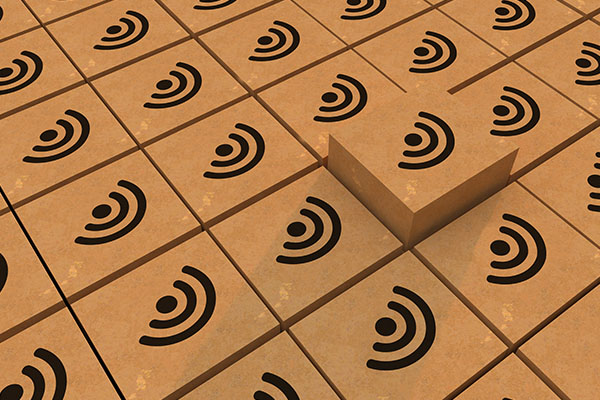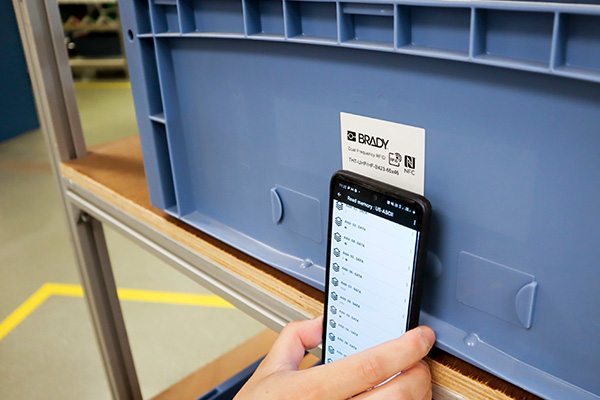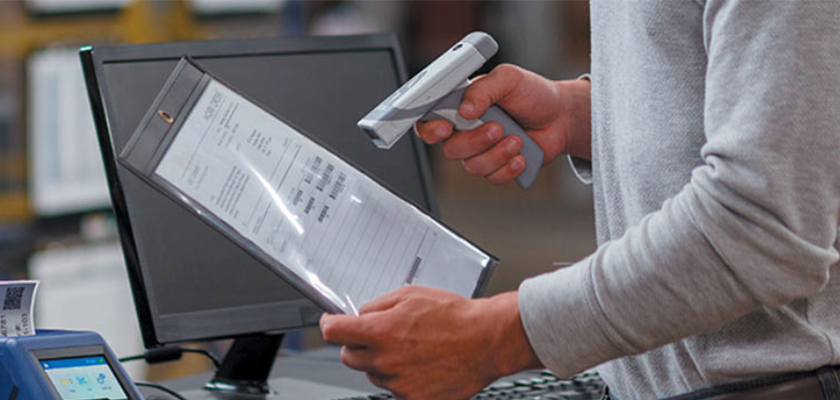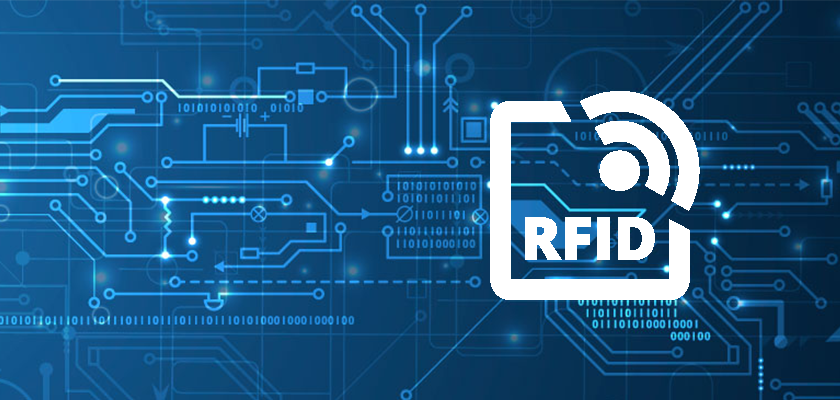Better decision-making starts with quality, data-driven insights. And a great way to see the big picture is with radio-frequency identification (RFID) technology. With it, businesses can monitor an asset’s location and gain control over important revenue-generating processes. Efficient and cost-effective, RFID technology has become the go-to tracking system for industries worldwide.
This article contains what you need to know about RFID asset tracking: what it is, how it works, its benefits and how you can easily implement it into your current system.
What is RFID asset tracking?
RFID technology is not new. You can trace its early roots back to WWII, where it was used to identify and track planes. Today, it’s used worldwide in warehouses, hospitals, manufacturing facilities, libraries and labs. It conveys vital information about assets in real time, making it one of the hottest supply chain technologies around.
In its most basic form, RFID (radio frequency identification) is a system of communication. It uses electromagnetic fields to identify and track objects, automatically. First, an RFID tag is loaded with information about an asset. Then, the tag is attached to the asset. From there, electromagnetic readers read the stored data that is transmitted through the tag’s pulsating waves. Once the data has been captured by a reader, the asset can be tracked in a system with asset tracking software.
Benefits
RFID asset tracking offers many benefits. If you’re wondering if it’s a good fit for your business, check out the ways it can help you meet your goals:
Operational benefits
- Locate and track multiple assets at once
- Does not require one-at-a-time line-of-sight data capture
- Avoid errors by quickly guiding employees to every asset they need
Strategic benefits
- Gain insights by automatically capturing data, then easily accessing it
- Employ recent and accurate data to further drive the profitability of your business
- Inform strategic decision-making on asset numbers, their locations, preventive maintenance and environmental elements


Reminder: asset tracking is not inventory tracking
Though sometimes asset and inventory tracking are used interchangeably, they shouldn’t be. They have two different operational goals. Asset tracking is a system that helps you:
- Find an object
- Make sure it’s in the right location
- Perform functions based on the object’s movement, proximity or absence
This differs from inventory tracking, which is a system that monitors the number of parts that can be sold or used to build products. In short, think of assets as the resources needed to run a business. Examples are vehicles, tools or equipment. Inventory tracks raw materials and finished goods products in storage locations. Both types of systems are important, but provide a different value for the company.
RFID asset tracking: technology and devices
Since businesses rely on their assets to create the inventory they sell, it’s critical to know their location at all times. This is where an asset-tracking system can help.
Using radio waves, RFID technology can passively detect an asset’s location and send that data to a relevant business system. It requires:
- Hardware (readers and RFID tags) to transmit and collect data
- Software to process data from the hardware and turn it into reports
Software
Asset-tracking software is dependent upon the application. The software takes the information from the reader (either the barcode or the license plate of the asset) and references it to a database. From there, the software sends messages about the asset, such as its location.
Hardware
RFID readers
These allow more information to be read and gathered without direct line-of-sight to the tag.
RFID tags & labels
RFID tag selection should be optimised for every use case. The component materials, antenna designs, microchip specifications and adhesives can all be selected based on a customer’s particular application requirements.


Diagram of an RFID tag
Basic types of RFID tags:
Active RFID tags — common use: vehicles
Provide real-time tracking using battery-powered tags that transmit a signal. They are more expensive than passive RFID tags and have a signal range of approximately 500 feet.
Passive RFID tags — common use: inventory
These tags are dormant until the energy transmitted by a reader is converted into power and activates the microchip. Their signal range is lower than active RFID tags and they’re less expensive. However, they have a longer life expectancy.
Semi-passive RFID tags — common use: monitoring temperature during transit
These tags use an RFID chip, internal battery and antenna, and require an RFID reader to use at a close range. The battery allows real-time tracking. Compared to an active RFID tag, it has a lower signal range.
Dual-frequency RFID tags — common use: identifying assets
These tags use a chip and operate in both high frequency and UHF frequency ranges. They allow businesses to use a single tag for multiple applications — an all-in-one solution for product identification, supply chain management and customer interaction.


Applications
As you strive to meet your business goals, you’re probably considering how RFID asset tracking technology can make you more efficient. Here are a few examples:
Efficient picking
Warehouses and logistics companies can increase forklift picking efficiency with RFID labels. Forklifts can be located quickly, and location detection can take place in real time, at crucial places such as zone changes, or when items are scanned, picked up and dropped off. This data enables pick-up and drop-off location control, efficient route calculation and route registration.
Instant cargo checks
Distribution centers use RFID labels and readers for automated cargo checks. RFID readers can check every component package against the cargo lists in central enterprise resource planning (ERP) systems. Wrong components are easily filtered out, missing pieces are noted and complete shipments are confirmed.
Guided installations
A machine builder can get large devices installed faster with custom RFID labels by guiding installers to the next package. Linked to digital installation manuals, each package with components is opened only when relevant. If proximity alerts are used, they can help find the smallest of packages needed to get large machines operational swiftly, and decisively.
Preventive maintenance
Rail passenger and freight transporters can increase locomotive and wagon uptime by easily identifying train composition with RFID labels and readers. Each wagon or locomotive can be linked to asset management software via an RFID label. Intervention data can be added to the maintenance history of labeled wagons in the field, and similar wagons can be flagged for efficient preventive maintenance.
Automated inventory audits
A worldwide information, communication and technology (ICT) company tracks and manages the location of every client’s servers and other high-value IT assets automatically, and can report on their location at the click of a button. Custom, passive RFID labels on every asset combined with fixed readers at all datacenter exits provide accurate, real-time tracking. Print-and-program printers in a central location enable the company to label any new assets immediately with reliable, custom RFID labels to maintain a complete overview.
Secured identification
A full-service ICT infrastructure provider can use secured cable identification data on double-layered, encrypted near-field communication (NFC) labels. On-metal NFC labels can be pre-programmed to include an information top layer for in-house and external professionals, and a deep security data layer accessible for in-house administrators. Professionals who are performing maintenance interventions can be given access to relevant label data using RFID pens linked to their user setup.
Faster safety checks
A large airline carrier flying 100+ destinations can use RFID labels and readers to perform routine aircraft checks up to 10 times faster. Aircraft maintenance crews can scan the cabin against an inventory list to check data on life vests, oxygen generators and masks. Not needing line of sight on every item creates a huge difference in operational speed by freeing up time for the personnel who manage an aircraft.


How Brady can help
If you’re ready to increase efficiency and productivity using RFID technology, we can help. Our solutions are customisable and designed for a wide variety of workspaces:
RFID labels & tags


Tracking RFID labels
Track assets and manage inventories more efficiently in complex industrial environments with RFID labels that can fit any surface. Give every asset a unique digital identity your readers can radio in on, so you’ll know where your assets are, without needing line of sight.


NFC labels
Easily read and write data to NFC labels that can be applied to every asset with modern, NFC-enabled mobile devices. Reliable NFC labels are the go-to solution for flexible data reading and writing in close proximity (1.96 inches).


Dual-frequency RFID labels
Improve any product or item’s supply chain management, authentication and end-user engagement with a single label that can be read both by RFID readers and mobile devices. Customers can provide feedback on uniquely identifiable products by reading the label with your app installed on their (NFC-enabled) mobile device.


Temperature-sensing RFID & NFC labels
Easily check temperatures from a distance or up close, for single or multiple assets, using battery-free Temperature-Sensing RFID or NFC Labels. Potential applications include environmental monitoring, material and equipment monitoring, cold chain monitoring, data center monitoring, maintenance and safety data collection, and greenhouse monitoring.


Moisture-sensing RFID labels
Easily get multiple asset moisture readings from a distance with battery-free Moisture-Sensing RFID Labels. UHF RFID Readers will pick up a wet or dry condition from all labels within range, each including a unique identifier.
Standard compliance
Our complete RFID solution complies with the following RFID and NFC standards:
- ISO/IEC 18000-63 (EPC Gen2v2): provides a common technical specification for UHF RFID scanners and labels/tags
- ISO/IEC 14443 A/B: describes 2 close-reading protocols with difference in modulation, coding schemes and anti-collision methods
- ISO/IEC 15693: long distance reading protocol and a popular high frequency RFID standard
- NDEF Format: is a standardized data format that enables NFC chip writing and reading with smartphones
Build your smart factory today with Brady
Let’s have a conversation to discuss what a flexible manufacturing environment can do for you.





